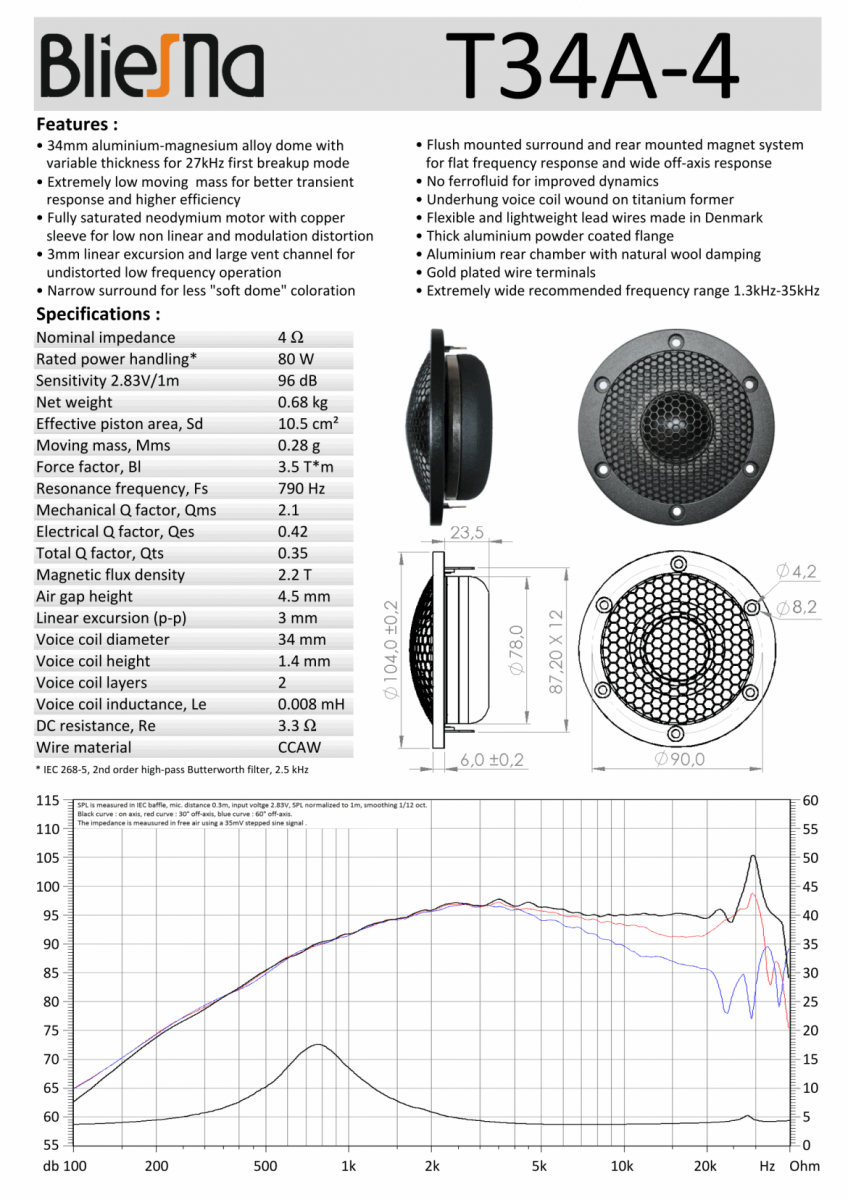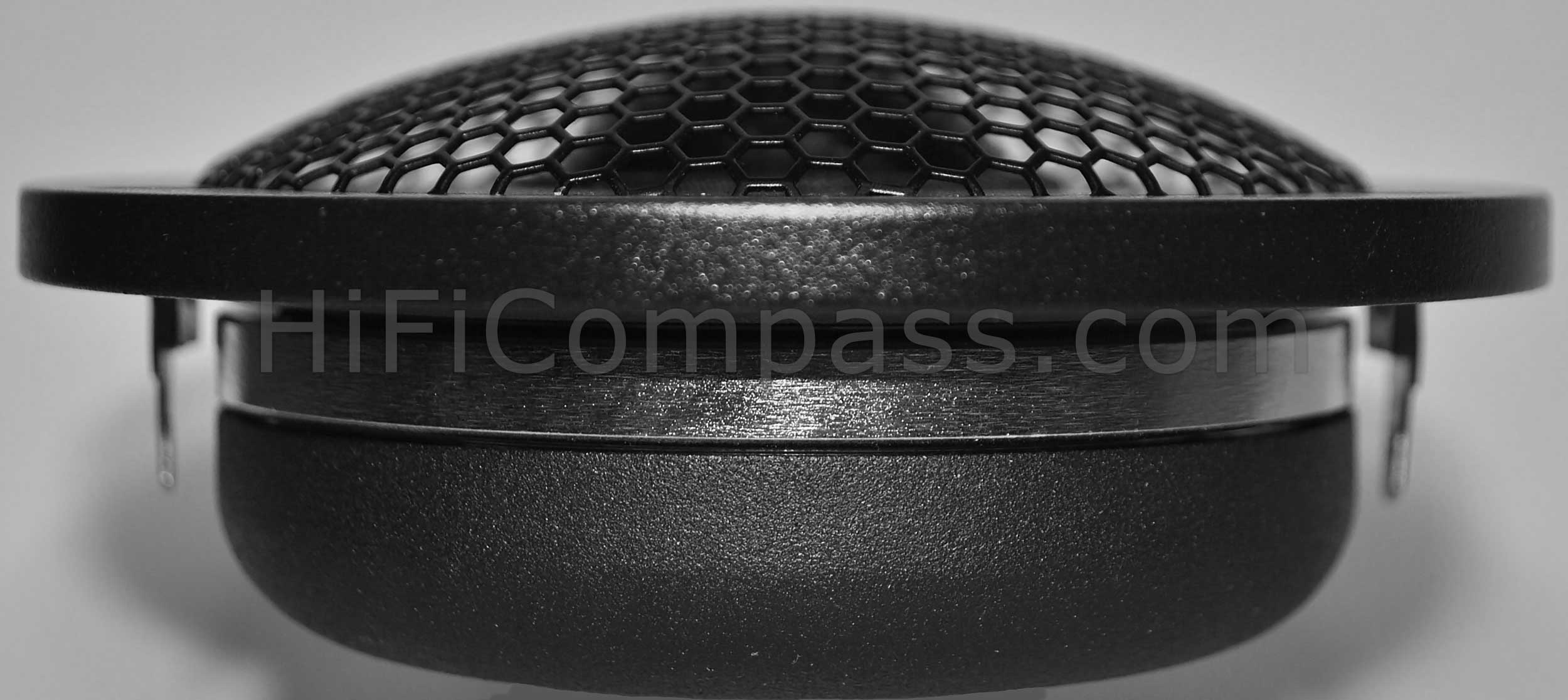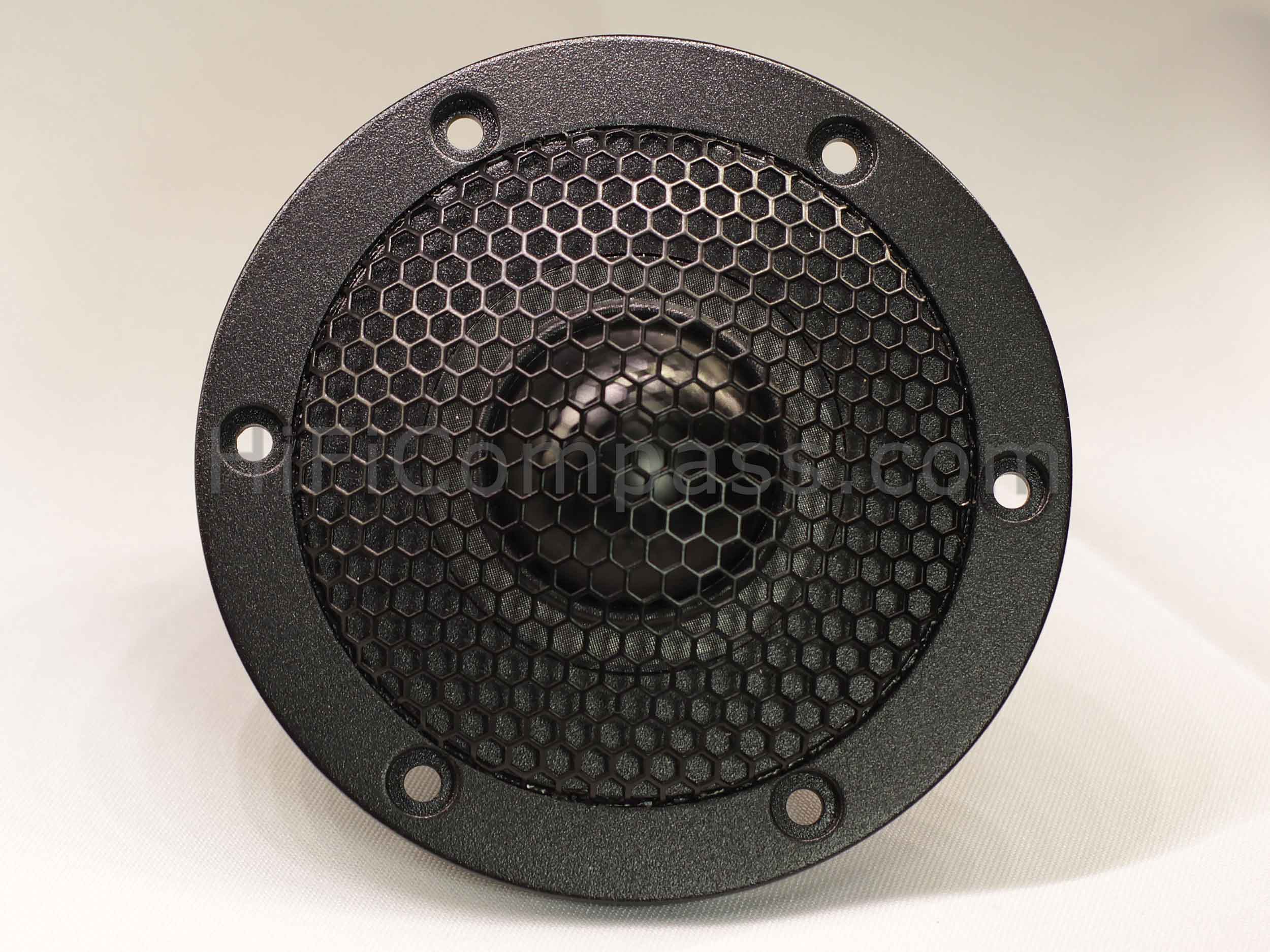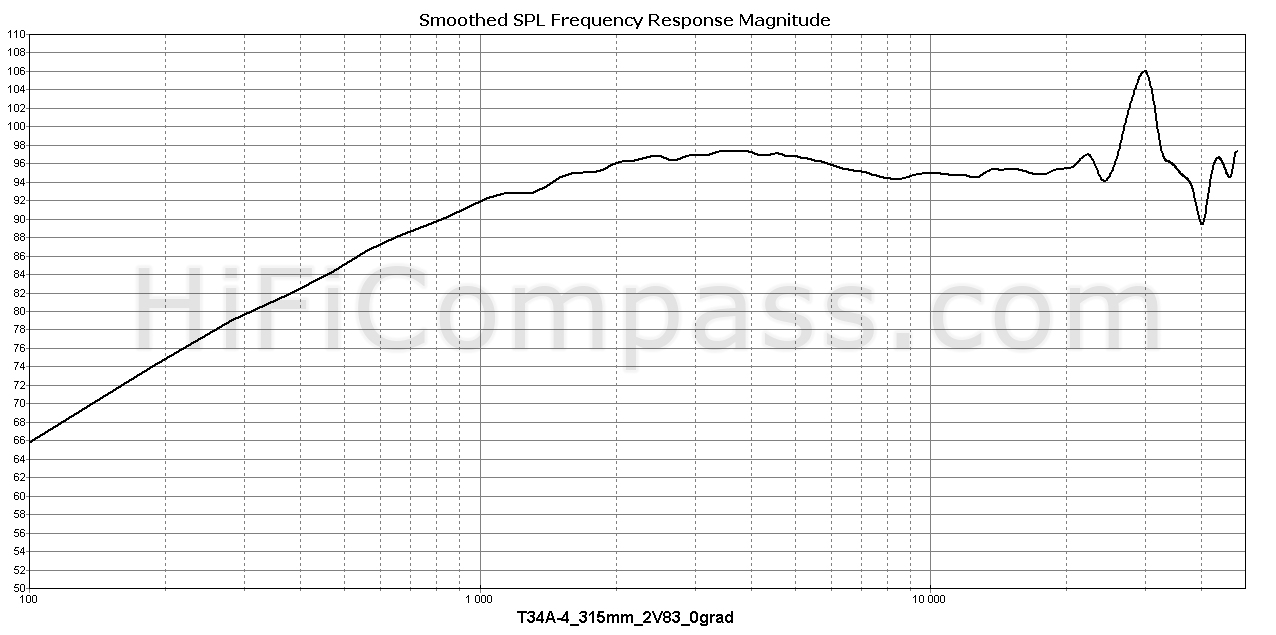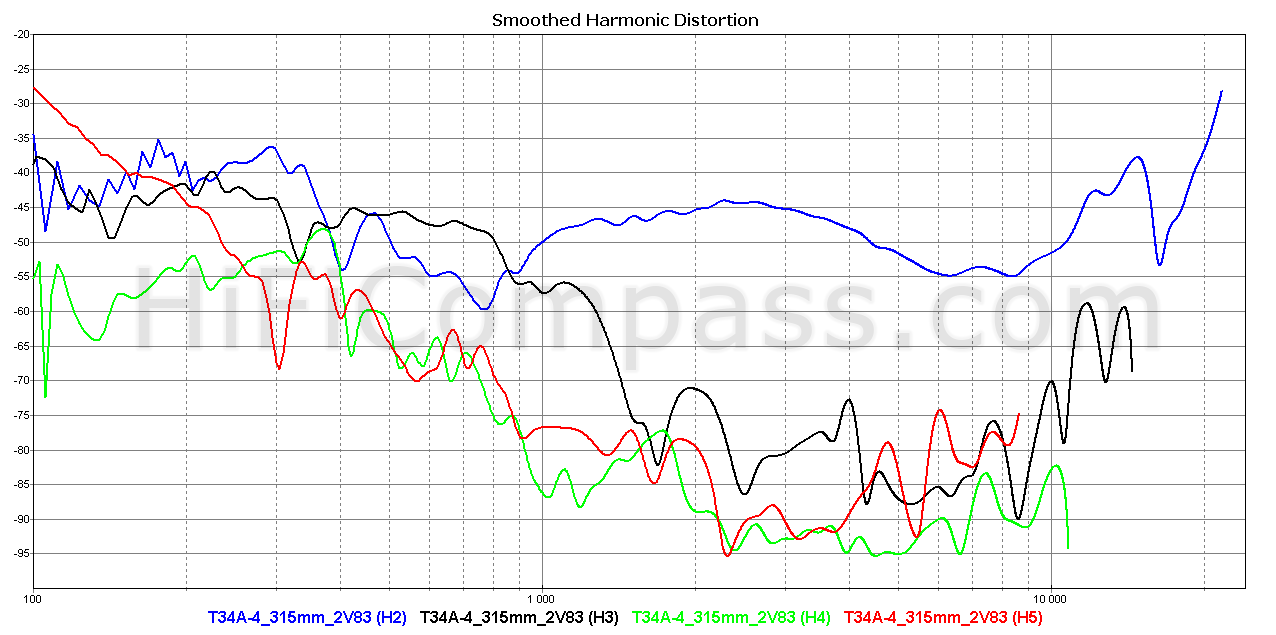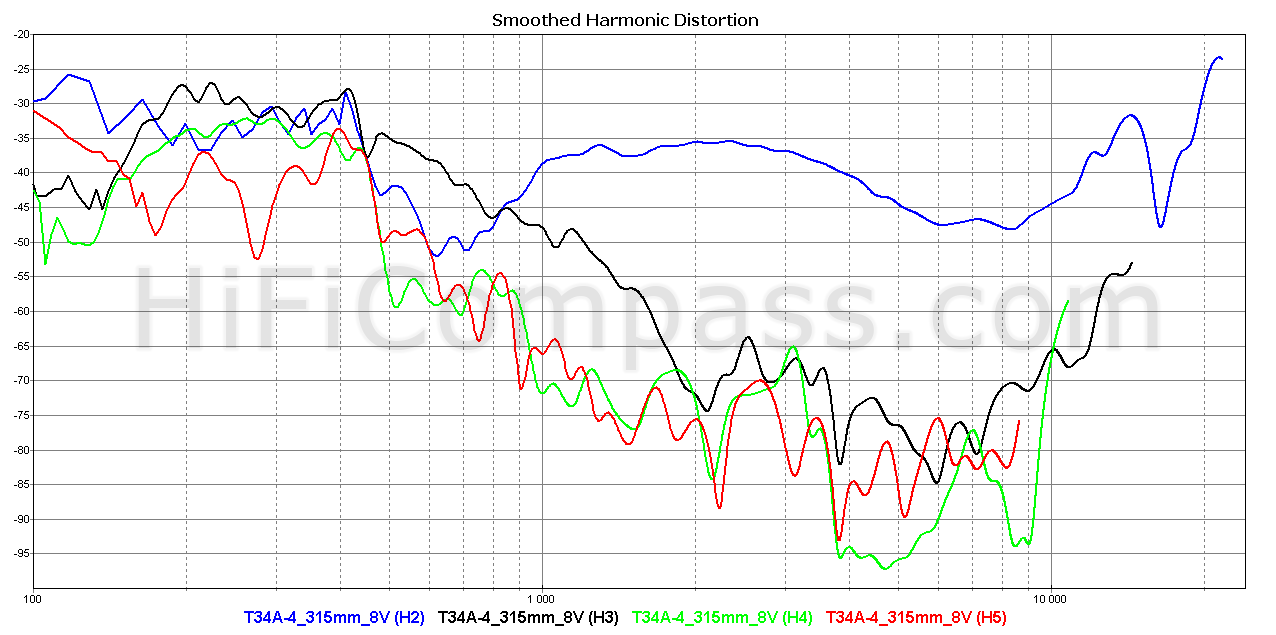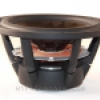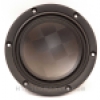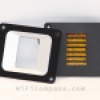HiFiCompass
Bliesma T34A-4 34mm AluMag Dome Tweeter
What is on the test bench?
Today we will get familar with a product of BlieSMa (Germany) company. What? What's BlieSMa? Who are they? Where are they from? Didn't hear anything yet…
Yes, friends, time flows, everything changes. Some of companies, even very famous, no matter how sad it was, leave out the market, and good products do that together with them too. But what can you do, this is busuness… The nature doesn't tolerate emptiness and on their place come the new young companies with fresh ideas and views. Inflow of fresh blood into the audio industry body is good but good when that blood of very high quality only, then there are hopes for healthy growing. We are in the 21st century and nearly hundred years have passed since the first speaker driver was invented and sometimes it seems there is almost impossible to invent something really new here but the progress, although small, there is. Yes, principally nothing changes for a while. Progress is spiraling, with each turn improving production technologies and materials of loudspeaker drivers. So, it is interesting from what point the young company will start and what contribution in the audio industry growth it bring.
So, what is about the company? We would wished to say a lot but there is almost nothing to say really as the company is very young. BlieSMa was founded and in Germany in 2018 by Stanislav Malikov who for a long time worked in such world famous companies which produce loudspeaker drivers as Morel (Israel) and Thiel&Partner (Germany, more familar in the world by its trademark - Accuton). By now that's all...
Let's start testing its first product - tweeter T34A-4 with 34mm dome made of aluminum-magnesium alloy.
We express our enormous gratitude to the manufacturer for the kindly provided product for testing, because there is nothing more interesting for us than to get acquainted with something new.
Why do we test this?
We tested hundreds of speakers and in the routine of day-to-day bustle it's very difficult to find time to write a review for each speaker, but simply publish "dry" measurements. And what's the point of describing everything when many products are not of special interest and are almost clones of each other, only in different clothes. But sometimes it needs to be done to introduce consumers to something new and really interesting. Here is just the case. The manufacturer stated about some quite rare and, to some extent, unique parameters which sparked our interest. Therefore, we have to find out whether this is really so.
What does the manufacturer say?
At first, we will get acquainted with the product official datasheet and see what is interesting there:
Wow, in fact not bad, the characteristics of the top segment category. We will go through the features because some of them really require of our explanation.
- 34mm aluminium-magnesium alloy dome with variable thickness for 27kHz first breakup mode
- This is really something new, in any case we have not yet had to deal with this. The dome of this size and the first resonance at 27 kHz is amazing. Usually, for all known to us 25 mm - 28 mm sized aluminium dome tweeters, the first break-up never was above 27kHz. Here we have the same frequency but for a 34mm dome. It became possible thanks to an elegant engineering solution - to make a dome of variable thickness, making it thinner and thinner from the edge to the top. Thus, mass distribution lifts up the properties of the aluminum membrane to the level of beryllium/ceramic ones.
- Extremely low moving mass for better transient response and higher efficiency
- Why is it so extreme - 0.28 grams? Everything is relative here. Probably, this statement refers to the comparison within the family of dome tweeters, because even for the typical 1" silk membranes with effective area of 7-9.6 cm2 this figure is 0.30-0.45 grams or 0.28 grams in case of 8.55 cm2 ceramic membranes, but here 0.28 gram corresponds to 10.5 cm2 area. Of course, comparison with the moving mass of planar or ribbon radiators will be inappropriate here.
- Fully saturated neodymium motor with copper sleeve for very low non linear distortion
- Nowadays such a motors are not rare and can be found in many top segment tweeters. But there is one small detail - the induction in the magnetic gap is 2.2 Tesla! It is not just a rare phenomenon but an exclusive parameter. We think so, it is somewhere near the theoretically achievable limit and it says that the manufacturer has done something in technology to achieve this.
- 3mm linear excursion and large vent channel for undistorted low-end frequency operation
- Stop! Nothing is messed up? 3 mm linear stroke? Do we consider a tweeter or a small full range speaker driver? 3mm is from peak to peak. The amplitude of 1.5mm is just a fantastic parameter. We have never seen a such tweeter parameter before. Now it is clear why the manufacturer recommended lowest operating frequency point set to 1.3kHz.
- Narrow surround for less "soft dome" sound coloration
- The surround is really very narrow. Due to this fact the ratio of the radiation areas of the dome and the fabric surround is very high, so that the contribution of soft surround to the overall nature of the sound is reduced.
- Flush mounted surround and rear mounted magnet system for flat frequency response and wide off-axis response
- Moving assembly flush mounted on the face plate doesn't affected neither by any additional waveguide-horn loading nor by reflections/bouncing between the tweeter dome and mounting flange itself. In this case the dome is mounted on top of a flat flange and looks from the outside just like a protruding segment of a sphere. According to the manufacturer, it contributes to a more even frequency response.
- Rear mounted magnet system is very good. Removing screws heads from the front side of the flange reduces additional reflections and contributes to the smoother frequency response. We saw the same construction in expensive tweeters from Scan-Speak and SEAS.
- Flexible and lightweight lead wires made in Denmark
- Thick aluminium powder coated flange
- Aluminium rear chamber with natural wool damping
- Gold plated wire terminals
- It is hardly worth stopping on the last four points. Of course all this is good but nothing special. It seems a marketing department included these items in the datasheet.
- Extremely wide recommended frequency range 1.3kHz - 35kHz
- And this is not just good but very good. It seems there are all prerequisites for this statement. Let's check.
It is no much sense to comment numerical parameters, except of remarkable sensitivity - 96dB / 2.83V, very high magnetic induction in the magnet gap - 2.2 Tesla and very low inductance - 0.008mH. Very high values.
Visual inspection
A detailed inspection has revealed simply impeccable quality of manufacturing. Microtexture powder coating is pleasant to touch. Perfectly adjusted details, complete absence of any defects in the coating, absolutely no trace of glue. Indeed, a massive thick aluminum flange which will not be flawed even when the screws are heavy tightened. Thanks to the rear mounted magnet system, no screws or slots except 6 mounting holes on the flange can be found. The terminals seem to be a single whole with the flange, they sit as if were pressed in and do not bend at all. Weight is remarkable, after all, almost 700 grams. The rear chamber is completely dead when tapping on it. The metal protective mesh with a large degree (about 70% of the open area) of acoustic transparency. And one more interesting point, the tweeters did not want to stay close to each other when we tried to take a few photos of the couple, all the time repelled from each other - such a strong magnets in them. The tweeters are assembled without a single screw and nail, so, to make out what kind of secrets are hidden there and then to assemble them back, you are so unlikely to succeed. And we would like ...
The only thing the tweeters lack is absent of a sealing ring in the back of the flange. That sealing ring simplifies the mounting process in some degrees.
Impedance frequency response
The measured parameters almost coincide with the declared ones by the manufacturer. The resonance frequency is even lower - 755 Hz. The impedance characteristic is very smooth without visible signs of serious stray resonances in the entire frequency range. Our measurements showed an inductance of 0.03 mH, but we are very skeptical about this figure since at a low measurable inductance the error of the WT3 system is very high. In general, the impedance curve in the range 3 kHz - 20 kHz is practically horizontal which is a sign of an excellent motor.
On-axis frequency response
Frequency response is very close to the one from the datasheet both in shape and absolute level. The measured average sensitivity in the range 2-6 kHz was about 96.5 dB, and in the range 6-20 kHz it was about 95 dB. In the range of up to 20 kHz the characteristic is very smooth, without dips and splashes. There is a slight smooth rise of 1.5 - 2 dB in the range with a center frequency of 3.5 kHz which will not pose a big problems in the crossover designing.
One can clearly see the main resonance of the membrane, an inherent attribute of all hard membranes. In this case it is located at a frequency of 29.5 kHz - an impressive figure. In 1" beryllium and ceramic membranes this figure is usually lie in the range 32-35 kHz. The question remains: what is the audibility of this peak and is it can be heard at all?
The left edge of the frequency range is very smoothly falling and it is easy to get the lower 1.3 kHz cut-off frequency together with the crossover. The second order high pass will allow to get the fourth order in sound pressure without polarity reversal of the tweeter. Good frequency response.
Off-axis frequency responses
The measured off-axis characteristics simply exceeded all our expectations and we were very surprised. They are truly unique. None of the 1" tweeters known to us can boast of such a broad dispersion. Not every small 3/4" tweeter can show such a result. All curves at angles from 15 to 60 degrees fall very smoothly and slowly with increasing both frequency and angle. The maximum discrepancy between the on-axis curve and one at an angle of 60 degrees does not exceed 9.5 dB, even at 20 kHz. Bravo!
Harmonic distortion (315 мм)
Here you can see the distortions at sound pressure levels of 96.5 dB and 105.5 dB (averaged level in the band 2-6 kHz) and we would characterize the nonlinear distortions as "very low".
The measurements were carried out with a 200 Hz cutoff high-pass filter included, as we were very concerning about the tweeter health when such a high voltage and a such powerful motor interacted. Even at the 2.83 V voltage level the membrane low frequency displacement is simply frightening. The fact the tweeter worthy passed the test at 106 dB while maintaining a low distortion speaks for itself. You can believe us, the 106 dB sound pressure level is a very loud. It is almost impossible to be in the same room during this test. We would like to make tests at 11.2 Volts too but it was scaring.
Well, is it possible to use this tweeter down to 1.3 kHz? You know, it seems that you can. Although in this range we observe only the third harmonic level rising, at the sound pressure of 102 dB at 1.3 kHz its level is just -53 dB which is quite acceptable. Moreover, at this frequency there will already be a -3 dB attenuation on a crossover side and the sound pressure support from midrange speaker driver.
Listening impressions
Unfortunately all kinds of measurements known to us by this time do not allow us to make an unambiguous conclusion about the loudspeaker sound quality. Moreover, the term of "sound quality" - is a very subjective value. So, we can only evaluate the technical side of a product and the final conclusion about the product's sound characteristics can be obtained only as part of the finished loudspeaker.
After completing the measurements we had took a brief listening test of this speaker driver in the test baffle on some musical material and the sound hadn't not disappointed us. We can note very unusual feelings from the tweeter's very wide sound dispersion - sounding is very open, spatial and slightly laidback. There were also no any signs of echoes from resonance at 30 kHz in the sound.
"How to use" recomendations
This tweeter can be used in loudspeakers with the number of bands from two or more. Perhaps, the greatest interest of tweeter applying is to marry it in a two-way loudspeaker with one or two decent 7 "-9" midwoofers since it will allow to expand the boundaries of restrictions and the bass capabilities of the existing two-way loudspeakers. Such loudspeakers will be able to compete with large three-way loudspeakers while preserving all the advantages of two-way ones. It is also possible to use the tweeter in three-way with a large midrange speaker driver.
The lower operating frequency at 1.3 kHz is not seems be a problem. To make this statement we are entitled both very high linear excursion and laboratory measurements of nonlinear distortions. In addition we should not forget that there is such a popular solution as a waveguide, with which assisting it is possible to lower the midwoofer-tweeter crossover point even further and then 10"-12" midwoofers will start to fall into our field of vision.
The fact that the tweeter is very sensitive, i.e. high efficiency, also gives us quite legitimate reasons to pull the tweeter to 1.3 kHz without fear for the increase in power dissipation on it. For example, if the lower cut-off frequency decreases from 2.5 kHz to 1.3 kHz, the power dissipated on the tweeter with the DIN test signal is increased by 2.85 dB, which can be compensated by a tweeter signal level decreasing by the same amount.
In the end, we get a tweeter with a real sensitivity of 103.65 dB in the working range from 1.3 kHz while maintaining the same dissipated power as when operating this tweeter from 2.5 kHz and higher. But... This tweeter also has a voice coil as much as 34 mm so its cooling is better than 1" competitors.
What is price and where to purchase?
Since the company is still quite young and the distributor network is just developing BlieSMa recommends to contact directly regarding the purchase of speaker drivers. The approximate retail price is about 580 EUR per pair.
Summary
It can be summarized that the tested speakers have the following features:
- Excellent sensitivity
- Smooth frequency response
- Excellent spatial dispersion
- Very low distortion
- The ability to operate down to 1.3 kHz
Throughout the whole set of measurements and short listening tests we can say that we definitely liked the speaker and we can safely recommend it to fans of multi-way loudspeakers. More detailed measurements can be found here.
Our testing confirmed the very close compliance of the measured parameters with the claimed ones. This indicates a high initial credit for trust in the manufacturer's passport data and that it is really possible to rely on them. It is a very good product and a great start for a young company. We look forward for her next products.
CONTACTS
- Ukraine
- (+380) 95 904 7827
- hificompass@gmail.com
LAST NEWS
-
04 Mar 2025
-
25 Feb 2025
-
10 Feb 2025
-
01 Feb 2025
